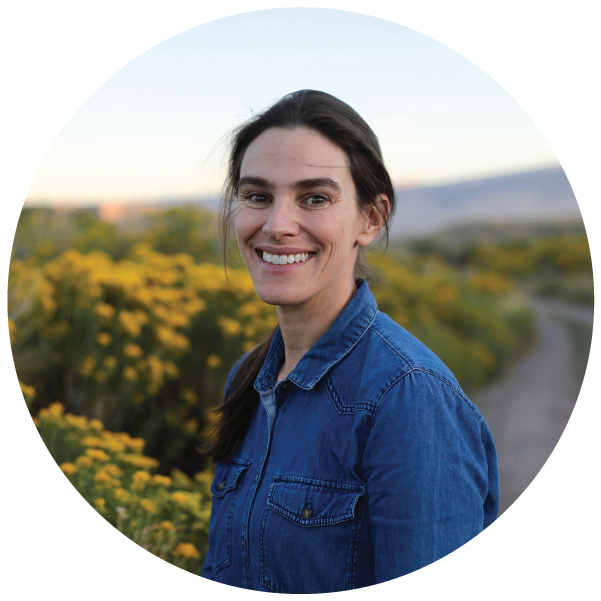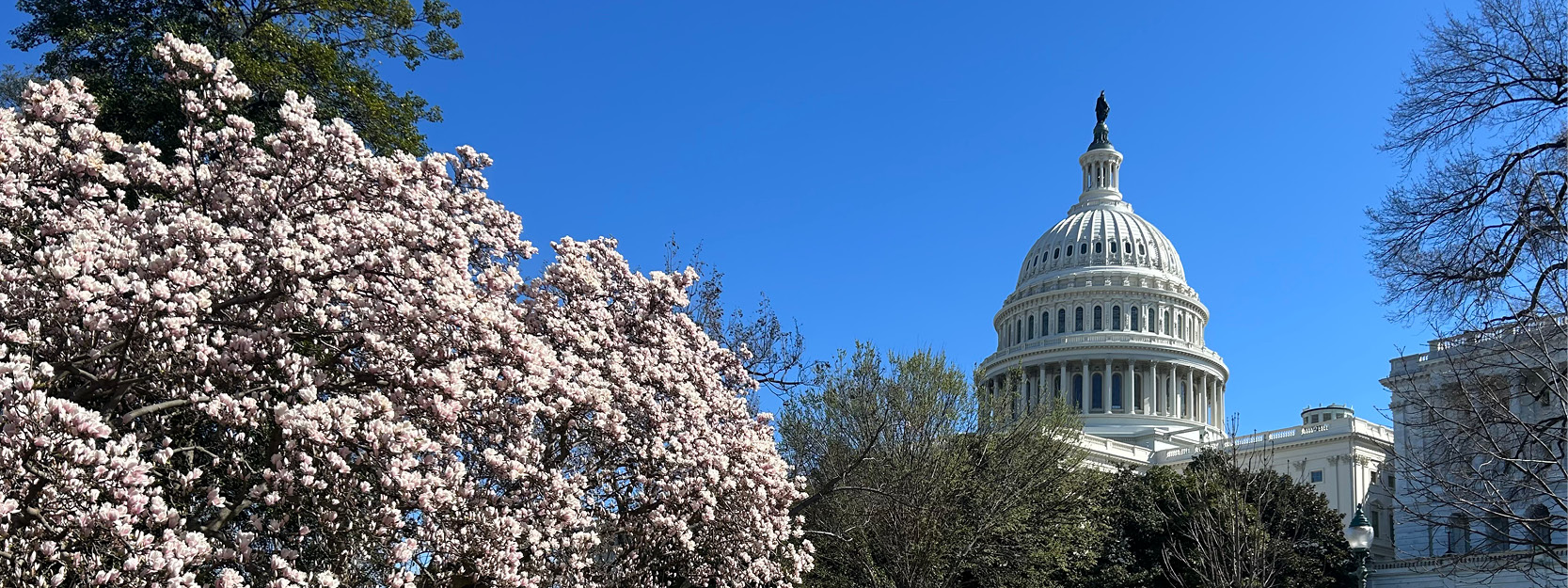On March 25, Big Wind Carpenter and I took off from a small Wyoming airport, bound for our nation’s capital, Washington, D.C. As we landed, the city was blanketed in the pink and white blossoms of cherry trees — an unmistakable sign of spring. While the season’s beauty filled us with optimism and a sense of hope, the urgency of our mission and the uncertainty facing Wyoming’s communities stood in stark contrast to the otherwise picturesque scene.
We were joined by elected officials from across Wyoming, city leaders, and union representatives to advocate for essential federal funding opportunities with our state’s congressional delegation.
Our goal in D.C. was to fight for the projects and programs that Wyoming communities, Tribes, and businesses are counting on — ones that promote energy efficiency and clean energy, that Wyomingites had vetted, and that were in the pipeline to be rolled out across the state. We spoke out in favor of programs like Home Energy Rebates, Solar for All, and Tribal Electrification, which collectively represent over $110 million in previously approved grant funding. These funds would help Wyoming’s low-income households afford rising electricity costs and make necessary home improvements — benefitting over 41 percent of Wyoming households.
Sadly, the future of these programs is now uncertain.
We also spoke in support of other long-standing programs that could be lost. The Rural Energy for America Program is one, which helps small rural businesses and agricultural producers lower operating costs through investing in energy efficiency and clean energy projects. Likewise, Investment Tax Credit and Direct Pay helps lower up-front costs for residents, local governments, schools, and businesses to afford their own rooftop solar or renewable projects. Finally, we fought for continued investment in public safety and quality of life, which makes local infrastructure more resilient to flooding and natural disasters, creates more walkable communities with safe routes to schools, and enhances occupational safety for Wyomingites working in mines.
Our presence was about more than policy — it was about real people and real projects. We were there to highlight the direct impacts recent federal decisions will have on our state and its people, and make sure that Wyoming voices are heard during the fast-tracked decision-making that has been largely absent of public input.
For months, our phones at the Wyoming Outdoor Council have been ringing off the hook. Community members have been asking which programs have been cut. Were the ones that help low-income residents afford their utility bills, like the low-income energy assistance program, now gone? Small business owners are worried about not receiving the federal grant portion for projects already underway. Tribal program employees are facing stalled infrastructure plans.
The message we’ve heard is clear: these funding cuts are hurting our communities. Yet, despite these challenges, hundreds of millions in federal funds have been frozen, and Congress is now considering further cuts to these vital programs — to fund tax breaks that overwhelmingly benefit corporations and the wealthy, leaving Wyoming residents to bear the cost.

In our meetings with Sen. John Barrasso, Rep. Harriet Hageman, and the staff of Sen. Cynthia Lummis, we emphasized how one-time investments, like these programs, could significantly benefit our communities. We shared how federal funding is an investment that furthers local priorities by: saving money, diversifying economies, creating jobs, and improving critical infrastructure. We worked to translate these ideas into real, on-the-ground impacts by showing how federal grants provide a pathway to bring federal tax dollars back to Wyoming by reinvesting them in our communities.
We also thanked the delegation for taking the initiative in recent years to better equip communities, Tribes, and businesses in securing federal grants — they helped host Wyoming’s Federal Funding Summits alongside the governor, and worked to integrate Wyoming’s new Grants Management Office. Because of these resources, Wyoming communities are now better positioned to compete with other states for federal funds and our workforce is more competitive.
Our meetings in D.C. weren’t without their challenges, however. We faced resistance on issues that seemed more tied to national-level talking points than what is actually going on in Wyoming communities.
This only reinforced a crucial point: while we brought the stories of Wyoming’s residents to D.C., our fight isn’t over yet.
Now that we’re back home in Wyoming, the fight continues. Your voices are more critical than ever. With the support of your calls and letters, WOC was able to take one more step in advocating for the programs that matter to you. But it’s still you — Wyoming’s ranchers, business owners, tribal members, and everyday citizens — who have the most powerful voice. Directly communicating with our elected officials and sharing your personal experiences and concerns will make the real impact.
Right now, Congress is actively working on a budget reconciliation process where these programs could be on the chopping block. House leadership shared their aspirations to have a new budget signed by President Trump by as early as May 26. That means, the time to act is now — and fast.
These federal funding opportunities are more than just figures on a spreadsheet; they are a direct investment in the hopes and dreams of Wyoming’s future, and you and your neighbors. These programs help move our communities towards having healthier air to breathe, clean water to drink, resilient infrastructure, and thriving local economies. Let’s not forget that spring is a time for new growth and new beginnings. Together, we can work hard to secure a future where Wyoming thrives.

MEGHAN RILEY
Wildlife Program Manager
meghan@wyomingoutdoorcouncil.org

